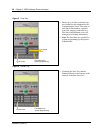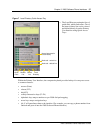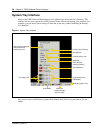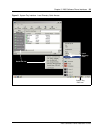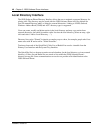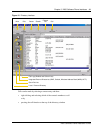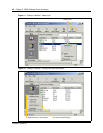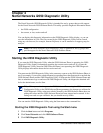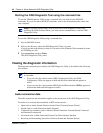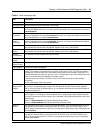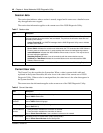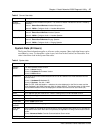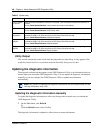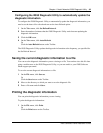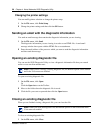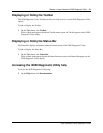
44 Chapter 4 Nortel Networks i2050 Diagnostic Utility
P0988431 Issue 03
Starting the i2050 Diagnostic Tool using the command line
To start the i2050 Diagnostic Utility using a command line, you need to know MS-DOS
commands. If you do not know MS-DOS commands, refer to the documentation that came with
your computer.
To start the i2050 Diagnostic Utility using a command line:
1 Start an MS-DOS session.
2 Move to the directory where the i2050 Diagnostic Utility is located.
If you do not know the directory where it is located, use the Windows Find command to locate
the i2050Diag.exe file.
3 Type
i2050Diag and press Enter.
The i2050 Diagnostic Utility starts.
Viewing the diagnostic information
The diagnostic information provided by the i2050 Diagnostic Utility is described in the following
four sections.
Audio connection data
The audio connection data information applies to the current user of the i2050 Diagnostic Utility.
For audio to be received and transmitted, an RTP stream must be:
• Open (refer to Audio Started, Receive Stream Closed, Transmit Stream Closed)
• Started (refer to Audio Started and Audio Stopped)
• Connected to a transducer (refer to Receive Stream Connected, Transmit Stream Connected
and Streams Disconnected)
• Not muted (refer to Mute Status and Current User Data's Headset Speaker)
• Receiving and transmitting data (refer to Receive Stream and Transmit Stream)
Note: If you have downloaded a new version of the i2050 Diagnostic Utility since
installing the i2050 Software Phone, you must use the command line to start the i2050
Diagnostic Utility.
Note: If a source is shown, the source indicates where you can view the value and modify
it if possible:
• If you can view the value from the i2050 Configuration Utility, the i2050
Configuration Utility tab appears in bold and the field within that tab appears in
italics.
• If you can view the value from the i2050 Software Phone interface, i2050-> appears in
bold and the menu and field appears in italics.



